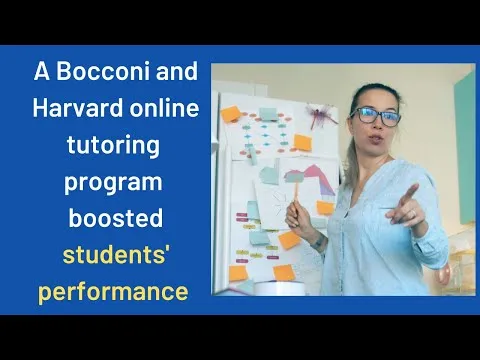
Education: Tutoring Immigrants to Do the Right Thing
Immigrant students are over-represented in vocational high schools compared to their native Italian peers of similar ability who enroll in technical and academic high schools that offer better employment prospects. A pilot program conducted in Italy aimed to reduce this gap through tutoring and career counselling to help high achieving immigrant students set their aspirations higher, in-line with their ability. Bocconi University professors, Eliana La Ferrara and Paolo Pinotti along with Michela Carlana (Harvard Kennedy School) evaluated this program in a paper published in advance on the Econometrica website and found that it indeed motivated program recipients to aspire better and closed the track choice gap.
The Equality of Opportunity for Immigrant Students (EOP) program was offered in 70 randomly chosen Northern Italian middle schools. In each of these schools, 10 highest performing immigrant students, as measured by their grade 6 test scores, were chosen to attend 13 counselling sessions, held by psychology trained counsellors, and up to 29 academic tutoring meetings through grades 7 and 8. Of the 13 career counselling meetings, five sessions were held one-on-one by counsellors trained in psychology, where they assigned tasks to prompt students to reflect on their goals, perceived barriers and the resources needed to achieve them. Five more sessions, held by the same counsellors, offered information in a group setting on the Italian education system and discussed motivational success stories of older immigrant students. Finally, the remaining three sessions from the trained career counsellors were addressed to parents and teachers.
The authors compared EOP students to 10 highest performing immigrant students in 75 randomly selected high schools that did not receive EOP. Since EOP was offered to schools randomly, the authors could safely compare both the groups of top immigrant students, without having to worry about only better schools with better students getting EOP.
They found that high ability immigrant boys who receive EOP were 12% more likely to enroll in a higher track high school and 44% less likely to repeat their grade than similar ability immigrant boys who didn't receive EOP. In fact, the boys who received EOP chose high tracks in the same proportion as similar ability native Italian boys; effectively closing the track choice gap between immigrant and native students. Teachers, noticing the motivation and higher aspirations in EOP recipients were also more likely to recommend them to enroll in a higher high school track as they did with comparable native students. The effect on girls however wasn't as stark since the differences in high school track choice between high performing immigrant girls and similar ability native girls were not much to begin with.
To see whether the choices weren't overshooting abilities, the authors followed up on EOP students for the first two years of high school. They found that despite choosing a more challenging high school, EOP students did not have a higher drop-out rate or a higher number of retakes than non-EOP similar ability immigrant students. So not only are aspirations higher, but also achievable.
As a bonus to the program, the authors observed that male immigrant classmates of EOP recipients were more likely to complete their grade and female immigrant classmates were more likely to enroll in a higher track despite not receiving the program.
Overall, the author's meticulous analysis of the role of aspirations is very encouraging. With the right counselling and information, immigrant students whose aspirations were set far lower than their capabilities can confidently choose a high school in line with their ability and more like their Italian peers.
Michela Carlana, Eliana La Ferrara and Paolo Pinotti, "Goals and Gaps: Educational Careers of Immigrant Children", Econometrica, Forthcoming Papers.
Related content:
How to Improve School Performance in a Lockdown
